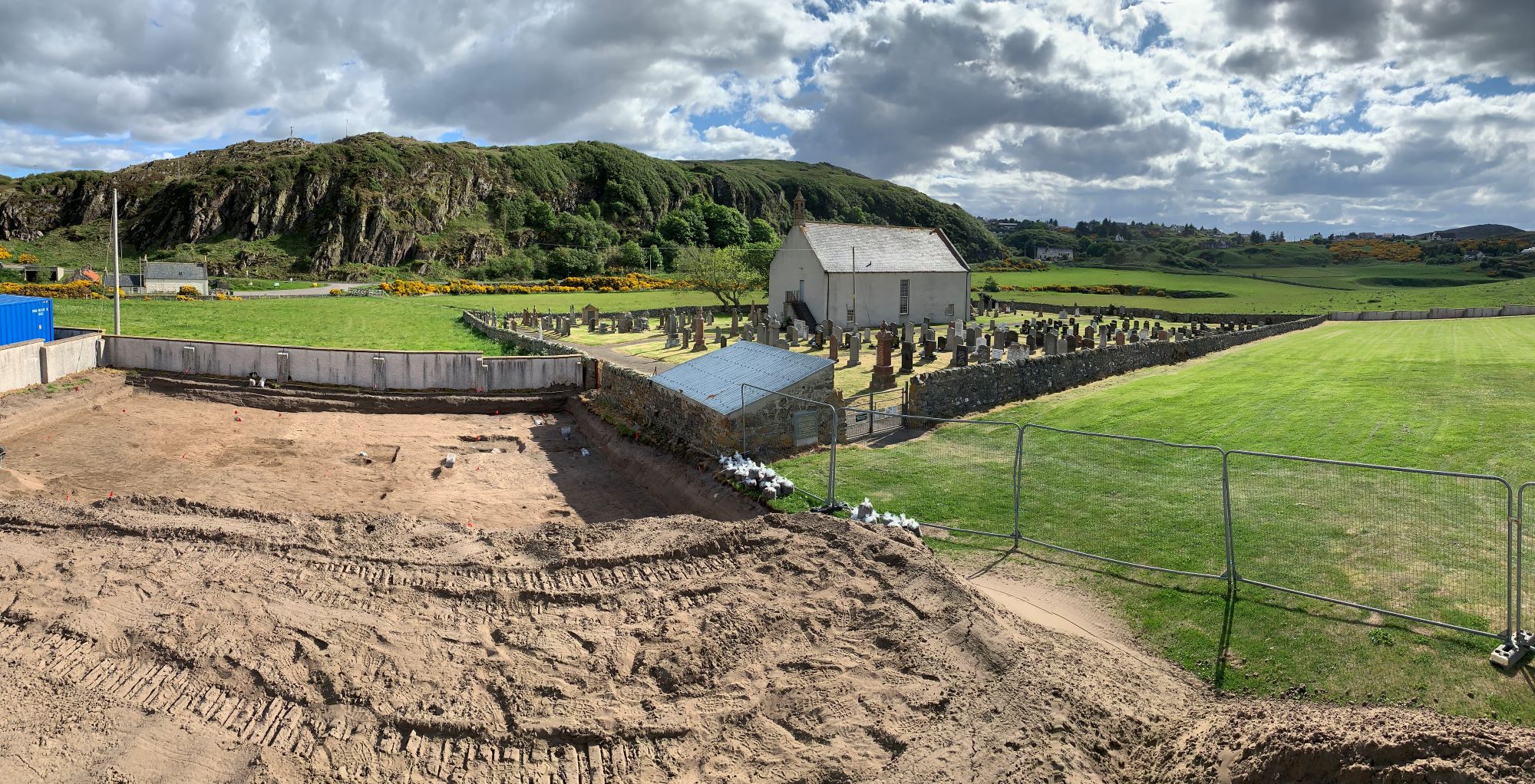Strathnaver Museum is located in the village of Bettyhill on the north coast of Scotland within Farr Old Church. The museum opened in 1976, but recent excavations ahead of redevelopment have revealed a much older past, hinting towards an early Christian or Pictish site, with high status metalworking.
The works were carried out on behalf of Strathnaver Museum as part of a development to build a museum annexe. The finds from the excavations will form part of the new museum collections.

Farr Old Church
The present building at Farr Old Church (former Parish Church of Columba) was built in 1774 and oversaw a turbulent period of Scottish history during which occupants of the strath were evicted from the land as part of the Highland Clearances.
The church has much older origins and is thought to have been built upon the location of its predecessor, which was erected between AD 1223-1245. Within the graveyard, stands the Farr Stone, a Pictish carved standing stone featuring a decorative cross and two intertwined birds. This early medieval cross slab, which likely dates to the period between AD 400 – 1000, suggests an even older ecclesiastical site may have existed.

Layers of the Past
During 2021, archaeological excavations were carried out ahead of redevelopment and extension of the museum. The main trench contained a series of layers representing different periods of archaeological activity. Preliminary radiocarbon dates indicate early activity on the site originated in the late Iron Age and early medieval periods.
The layers were characterised by midden material (refuse from past occupations made up of mixed animal bone, shell, and charcoal flecks) which can provide important insights into the available resources and diet of the people who occupied this site. Archaeological features were buried within these layers, including groups of pits, hearths, firepits, a possible sunken-floored building, a curvilinear ditch, and stone alignments.


Metalworking
Debris from ironworking processes was found throughout the layers on site, including numerous pieces of slag and plano-convex hearth bases indicating that smelting and/or smithing had likely taken place here. Evidence for bronze working was also found in the form of casting debris and fragments of ceramic moulds. High status, ornamental, bronze objects were found in the form of a crook-headed pin, a strap fitting and a plate or fastener, all of which point to the importance of the site. Iron objects recovered include fragments of rivets and nails, and ard point from an early plough. Metalworking finds such as these have been found on other early Christian, monastic sites.
Images: Crook-headed bronze pin; fragment of ceramic mould (possibly for a ring brooch); small bronze plate/fastener; iron ard/plough point.


Artefacts
Over 200 sherds of pottery were found throughout the excavation, and while mostly plain and undecorated, they are indicative of late prehistoric or early medieval date. The pottery was mostly handmade, but a few fragments of wheel-thrown pottery were also present, possibly originating from the medieval period.
Over 70 coarse stone objects were discovered, including grinders, pounders, hammerstones, whetstones, anvils, and stone discs that may have functioned as pot lids. Large fragments of quern stones used for processing grain were also found. A beautifully polished pebble may have been used as a burnisher.
Animal bone was found mixed throughout the midden layers and generally represents food waste from the site. Several fragments of cetacean (whale/dolphin) bone showed evidence of working to create tools. A small fragment of a bone comb was also found, with the freshness of its condition suggesting it may have been newly made.
Further Research
While the excavation is complete, analyses of the features and finds from Strathnaver Museum are ongoing as archaeologists piece together the complex layers and learn more about the function of the site from the environmental and artefactual evidence. Analysis of the bone, shell, and charcoal will provide clues to the resources used by past people, as well as providing material for radiocarbon dating. Preliminary dates from the site suggest activity in the late Iron Age and early medieval periods. Specialist research into the artefacts will also shed light on the function of the site and the nature of the craft activities taking place here.
Farr Old Church stands in a landscape that is layered with human occupation from past to present. Significant prehistoric settlement is known at Invernaver, with further hut circles, cists, and cairns spread throughout the landscape. To the southwest, a broch sits at Lochan Druim, overlooking the mouth of the river, while the remains of a medieval castle stands on the cliffs of Ard Farr to the northeast. The remains of a possible early Christian site at Farr Old Church is an important addition to the wider archaeological landscape, with the site itself has potential comparisons to monastic and craftworking sites such as Portmahomack, Inchmarnock, and Iona.
The Museum is currently fundraising to allow this important research to take place and for the story of Strathnaver and its artefacts to be shared with future generations.






















